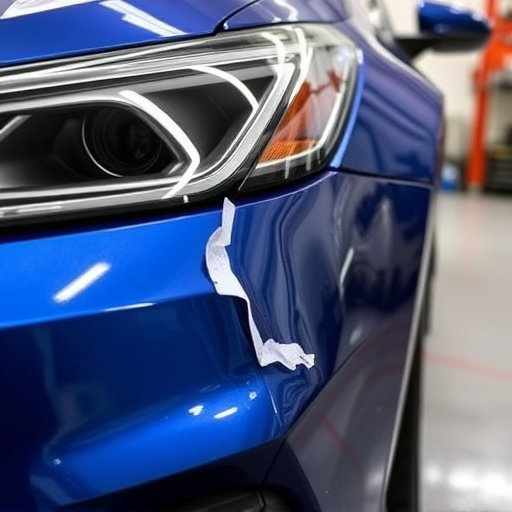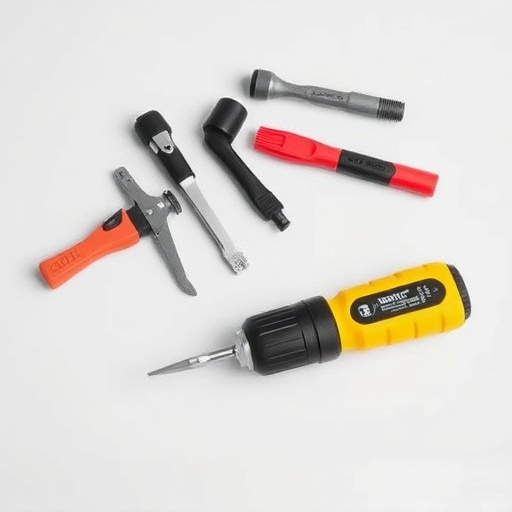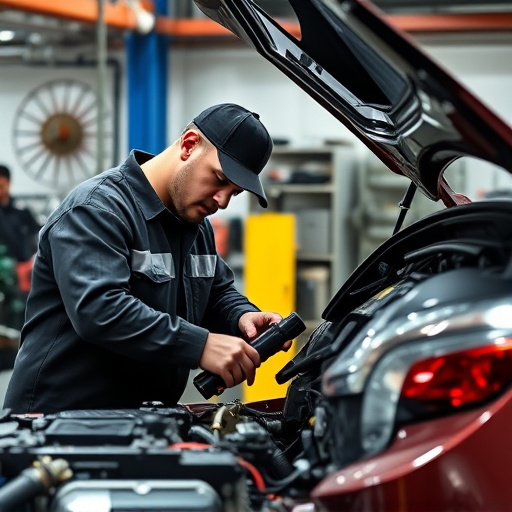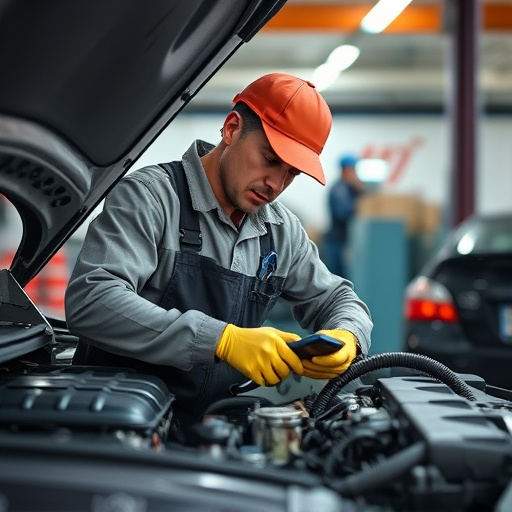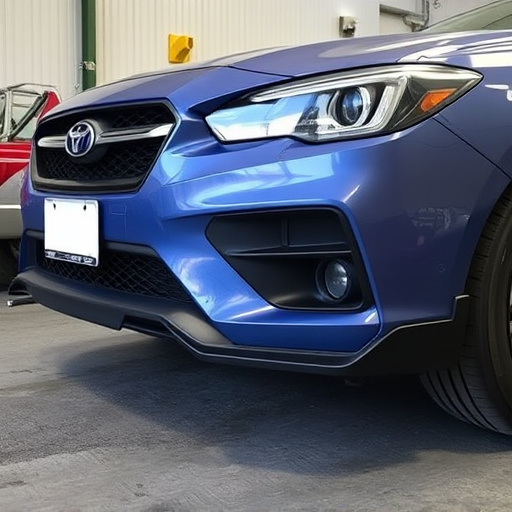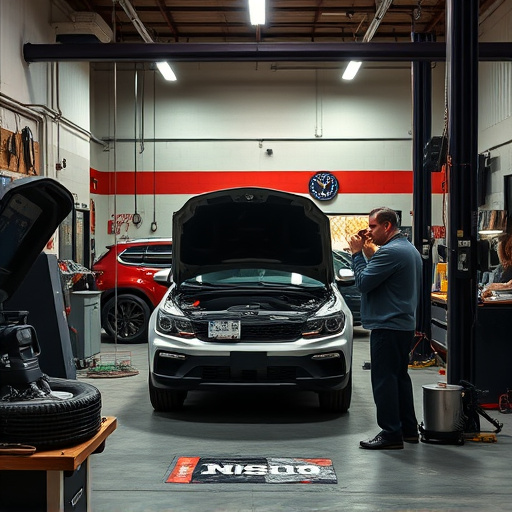Tesla's Over-the-Air (OTA) Diagnostic Support system remotely monitors and troubleshoots vehicle performance, updating software without physical inspections. This technology enhances customer satisfaction, streamlines body shop services, minimizes downtime, and reduces costs. Despite security and connectivity challenges, OTA diagnostics offer significant advantages for electric vehicle maintenance and repair, revolutionizing traditional car care practices.
Tesla has pioneered over-the-air (OTA) diagnostic support, revolutionizing onboard system validation. This cutting-edge technology enables remote monitoring and updates of vehicles’ electronic control units, enhancing efficiency and safety. By leveraging OTA diagnostics, Tesla can quickly address software issues, improve performance, and ensure consistent quality across its fleet. This article explores the intricacies of Tesla’s OTA system, its benefits for validation processes, future prospects, and challenges in the context of electric vehicles.
- Understanding Tesla's Over-the-Air Diagnostic Support System
- Benefits and Impact on Onboard System Validation
- Future Prospects and Challenges in OTA Diagnostics for Electric Vehicles
Understanding Tesla's Over-the-Air Diagnostic Support System

Tesla’s Over-the-Air Diagnostic Support (OTA) system is a groundbreaking technology that revolutionizes onboard system validation. It allows for remote access and real-time monitoring of vehicle performance, enabling efficient troubleshooting and maintenance. This innovative approach eliminates the need for traditional physical inspections, which can be time-consuming and costly. With OTA, Tesla can push software updates and diagnostics directly to the car, ensuring optimal performance and enhancing customer satisfaction.
This system provides a seamless connection between the vehicle and Tesla’s servers, enabling mechanics and owners alike to access detailed vehicle information. Whether it’s detecting minor issues like a car scratch repair or identifying more complex problems requiring frame straightening, the OTA system facilitates quick resolution. Moreover, it streamlines body shop services by providing remote guidance, minimizing downtime, and offering cost-effective solutions for various maintenance needs.
Benefits and Impact on Onboard System Validation
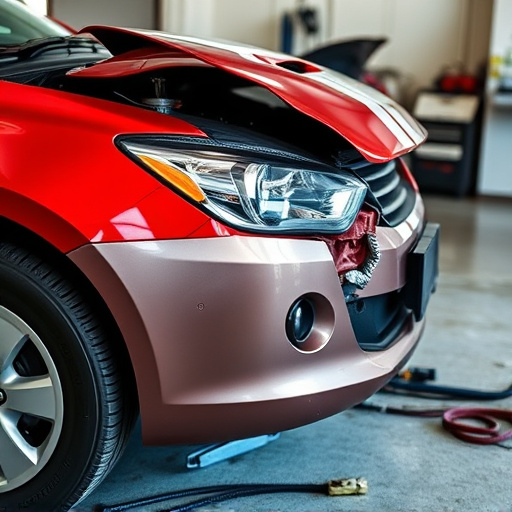
Tesla’s over-the-air diagnostic support is transforming onboard system validation by enabling remote troubleshooting and updates. This innovative approach allows for quicker identification and resolution of issues, reducing downtime for vehicles and enhancing overall fleet efficiency. With real-time data access, technicians can diagnose problems remotely, eliminating the need for costly and time-consuming on-site inspections.
Furthermore, this technology streamlines the auto body repair process by facilitating precise diagnostics even after incidents like frame straightening or car body restoration. By updating software directly over-the-air, automakers can ensure optimal system performance and reliability, minimizing the risk of future malfunctions that could lead to more extensive and expensive repairs.
Future Prospects and Challenges in OTA Diagnostics for Electric Vehicles

As Tesla continues to lead the way in electric vehicle (EV) technology, over-the-air (OTA) diagnostic support for onboard system validation is poised to revolutionize car maintenance. This future prospect offers significant advantages, such as remote troubleshooting, reduced service center visits, and more efficient updates for EV software and firmware. By enabling faster and more convenient diagnostics, OTA capabilities can enhance the overall ownership experience for Tesla customers, mirroring the seamless connectivity and updates they’ve come to expect from their vehicles.
However, challenges remain in implementing widespread OTA diagnostic solutions for EVs. Security and privacy concerns top the list, as over-the-air access to sensitive vehicle systems demands robust encryption and protection against cyber threats. Additionally, ensuring reliable internet connectivity throughout a vehicle’s lifecycle, especially in remote areas, is crucial for successful OTA diagnostics. Another challenge lies in integrating diverse onboard systems from various suppliers into a unified OTA framework, requiring collaboration and standardization among manufacturers. Despite these hurdles, the potential benefits of OTA diagnostics—from streamlining car body repair and paint services to facilitating efficient dent removal—make it an exciting area of development in the EV industry.
Tesla’s Over-the-Air (OTA) diagnostic support system is a game-changer in onboard system validation, offering remote troubleshooting and software updates. This technology significantly enhances vehicle reliability and efficiency by enabling engineers to diagnose and fix issues without physical access to the car. As electric vehicles (EVs) become more complex with advanced onboard systems, OTA diagnostics will play a crucial role in ensuring optimal performance and addressing maintenance challenges remotely. However, navigating the challenges of securing and standardizing these processes is essential for widespread adoption, ultimately revolutionizing EV ownership and service experiences.
